It’s Expo Hall Day! YAY SWAG! Ok, I guess I didn’t have much time to gather too much swag today. Odd given that I only went to a couple of sessions, one of which was a let-down. After breakfast, we headed back over to the Video Game History Museum and got our old-school game fix on. I played better today than I did yesterday and set the high score on Asteroids, although I’m sure it didn’t survive the morning. Russ Hanna kicked my butt at Centipede and Richard Fleming bested me at the driving game Turbo. ARG! How do I lose to Fleming at a driving game??? 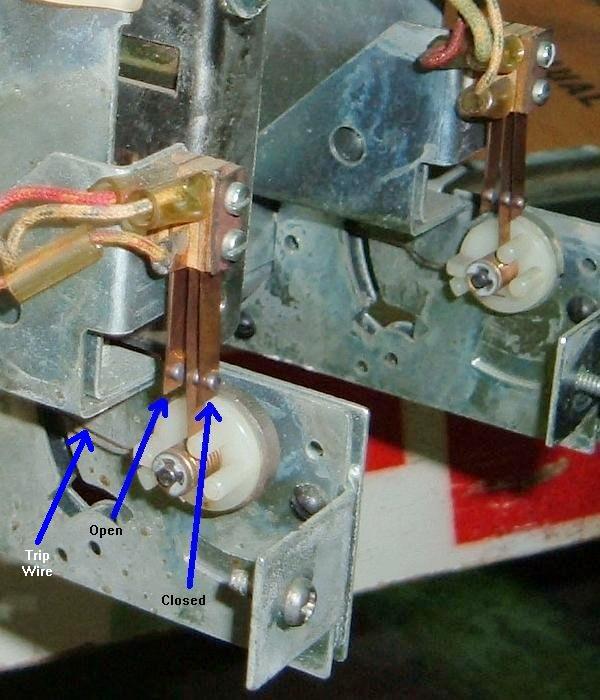 If there were dragons in the game, sure I could see it, but driving? …ugh. I suck. I bit of geek pride was that I had to show the others how to trip the microswitch on the back of the coin acceptor to register credits instead of actually having to put a quarter in the slot. Seriously, did you guys not grow up in the 80s? How do you not know how to do this?
If there were dragons in the game, sure I could see it, but driving? …ugh. I suck. I bit of geek pride was that I had to show the others how to trip the microswitch on the back of the coin acceptor to register credits instead of actually having to put a quarter in the slot. Seriously, did you guys not grow up in the 80s? How do you not know how to do this?
In past years, the first event on Wednesday was a keynote address by a legend in the game industry such as Shiguri Miyamoto or Hideo Kojima. Last year, they opted for a different format in which select presenters are given a brief amount of time to pitch their talks. It’s an interesting format, and it did get me to check out some sessions that I wouldn’t have otherwise, but on the whole, it was an hour of pointless idleness. This year I chose to be idle somewhere else, like the upstairs in the museum playing Asteroids. The Expo Hall opened at 10am, and we started in our systematic way, start at one end and leave no area unexplored. I didn’t spend a whole lot of time in the expo hall, only an hour, but I did need a supplementary bag! Going back for more today. The t-shirt count is up to seven, and sure to climb by the end of the conference on Friday. I haven’t run across anything especially interesting yet, mainly just the standard pens, pads, and other such trinkets.
The first session I attended after our lunch break was a talk on the lessons learned about the role of code, data, and tools during the development of Assassin’s Creed III – Homestead. While I thought that would be interesting, it really wasn’t. The presenter spent more time on fancifying his slides rather than crafting an intelligently organized presentation.  Oh, well. The next session, and last of the day, was by Jeff Norris and Victor Luo from the Jet Propulsion Laboratory with the cheesy title, “We Are The Space Invaders”. I had fully expected the talk to simply be “We have 3D models of spacecraft, and you should use them in your game.” This has been NASA’s standard MO in the past, but this talk was amazing. Jeff and Victor demonstrated how NASA was using the Unity game engine to create interactive tools and games for the public, including a downloadable game for the XBox 360, and it actually looked good! Unfortunately, I don’t have a 360 so I can’t check it out, but if you do, search for Mars Curiosity. There should be a Kinetic game that you can download for FREE. Cool. The other point they made was that the game industry understands user interfaces and controls to a much greater extent that many rocket scientists. (duh) Given that, they’ve been working on ways to utilize more game-like controls into their spacecraft and rover control systems. One impressive demonstration was a video showing a group of 5th grade kids playing a motion recognition game on the Xbox, then taking those skills they learned in less than a minute in a game and using them to control a $5M robonaut. Mind you, they didn’t control a simulation of the robot, they were in actual control of the real multi-million dollar piece of hardware after 45 seconds of training, and they were controlling it with skill and dexterity! NASA took those lessons and started applying them to other less humanoid applications. The next demonstration they showed was super impressive. Using motion-capture technology on an operator’s hand, they are able to expertly control the All-Terrain Hex-Limbed Extra-Terrestrial Explorer (ATHLETE). Best of all, they did the demonstration, not with an animation, but remotely with the actual two-story tall robot! Jeff Norris applied the controls live during the GDC talk and those commands were sent to and obeyed by the ATHLETE robot at JPL. It was brilliant!!
Oh, well. The next session, and last of the day, was by Jeff Norris and Victor Luo from the Jet Propulsion Laboratory with the cheesy title, “We Are The Space Invaders”. I had fully expected the talk to simply be “We have 3D models of spacecraft, and you should use them in your game.” This has been NASA’s standard MO in the past, but this talk was amazing. Jeff and Victor demonstrated how NASA was using the Unity game engine to create interactive tools and games for the public, including a downloadable game for the XBox 360, and it actually looked good! Unfortunately, I don’t have a 360 so I can’t check it out, but if you do, search for Mars Curiosity. There should be a Kinetic game that you can download for FREE. Cool. The other point they made was that the game industry understands user interfaces and controls to a much greater extent that many rocket scientists. (duh) Given that, they’ve been working on ways to utilize more game-like controls into their spacecraft and rover control systems. One impressive demonstration was a video showing a group of 5th grade kids playing a motion recognition game on the Xbox, then taking those skills they learned in less than a minute in a game and using them to control a $5M robonaut. Mind you, they didn’t control a simulation of the robot, they were in actual control of the real multi-million dollar piece of hardware after 45 seconds of training, and they were controlling it with skill and dexterity! NASA took those lessons and started applying them to other less humanoid applications. The next demonstration they showed was super impressive. Using motion-capture technology on an operator’s hand, they are able to expertly control the All-Terrain Hex-Limbed Extra-Terrestrial Explorer (ATHLETE). Best of all, they did the demonstration, not with an animation, but remotely with the actual two-story tall robot! Jeff Norris applied the controls live during the GDC talk and those commands were sent to and obeyed by the ATHLETE robot at JPL. It was brilliant!!
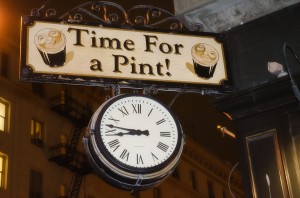 The last GDC event of the day was the Awards Show. This comes in two parts, the Independent Games Festival and the Game Developer’s Choice Awards. It’s always a good time and it’s neat to see what new things people are exploring in games. Two games that I plan on checking out when I get back are FTL: Faster Than Light, and the Game of the Year Journey. Journey is visually interesting, but I’m not clear as to why it was so much better than every other game. I guess I’ll have to play it to find out. Well, that’s it for a long day. Guess it’s time for a pint!
The last GDC event of the day was the Awards Show. This comes in two parts, the Independent Games Festival and the Game Developer’s Choice Awards. It’s always a good time and it’s neat to see what new things people are exploring in games. Two games that I plan on checking out when I get back are FTL: Faster Than Light, and the Game of the Year Journey. Journey is visually interesting, but I’m not clear as to why it was so much better than every other game. I guess I’ll have to play it to find out. Well, that’s it for a long day. Guess it’s time for a pint!


 I recently had the amazing opportunity to go to the Kennedy Space Center as an invited guest to see the launch of a pair of spacecraft, the
I recently had the amazing opportunity to go to the Kennedy Space Center as an invited guest to see the launch of a pair of spacecraft, the 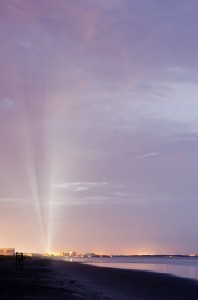 It was your typical cocktail party with everyone standing around awkwardly having awkward conversations, awkwardly introducing people they’d just met to other people they’d just met, while trying to juggle silverware, plate, and drink in one hand to shake hands with the other.
It was your typical cocktail party with everyone standing around awkwardly having awkward conversations, awkwardly introducing people they’d just met to other people they’d just met, while trying to juggle silverware, plate, and drink in one hand to shake hands with the other.  Apparently, August is sea turtle hatching season, and my wife and I got to witness one young, lucky turtle make it from the beach to the sea without becoming breakfast for the lurking sea gulls.
Apparently, August is sea turtle hatching season, and my wife and I got to witness one young, lucky turtle make it from the beach to the sea without becoming breakfast for the lurking sea gulls.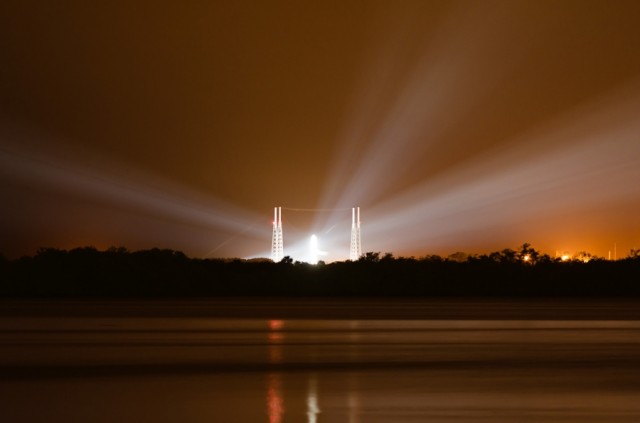
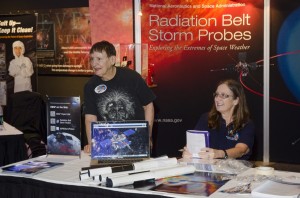 After a couple fitful hours of sleep, it was time to get up again and head back out to Kennedy and the Visitors’ Complex! I volunteered at the RBSP exhibit booth there next to the IMAX theater answering questions about the radiation belts and the RBSP mission, as well as leading youngsters through a variety of short activities we had set up to demonstrate the effects of magnetic and electric fields. It was also a good time to reconnect with some great educators I met at the RBSP Teachers’ Workshop held at APL earlier in the month. My complimentary ticket to the KSC Visitors’ Complex didn’t include access to the bus tour, so no up-close tour of the VAB for me, but they do have a pretty cool Rocket Garden where they have several launch vehicles on static display.
After a couple fitful hours of sleep, it was time to get up again and head back out to Kennedy and the Visitors’ Complex! I volunteered at the RBSP exhibit booth there next to the IMAX theater answering questions about the radiation belts and the RBSP mission, as well as leading youngsters through a variety of short activities we had set up to demonstrate the effects of magnetic and electric fields. It was also a good time to reconnect with some great educators I met at the RBSP Teachers’ Workshop held at APL earlier in the month. My complimentary ticket to the KSC Visitors’ Complex didn’t include access to the bus tour, so no up-close tour of the VAB for me, but they do have a pretty cool Rocket Garden where they have several launch vehicles on static display.
 As the storm cell approached the Cape, the weather conditions became less and less favorable for a launch and once again at 0425, they scrubbed. No launch for us. The night wasn’t a total loss, though. We did get to see an alligator swimming by in Banana Creek right in front of us, and thankfully on the other side of the fence.
As the storm cell approached the Cape, the weather conditions became less and less favorable for a launch and once again at 0425, they scrubbed. No launch for us. The night wasn’t a total loss, though. We did get to see an alligator swimming by in Banana Creek right in front of us, and thankfully on the other side of the fence.